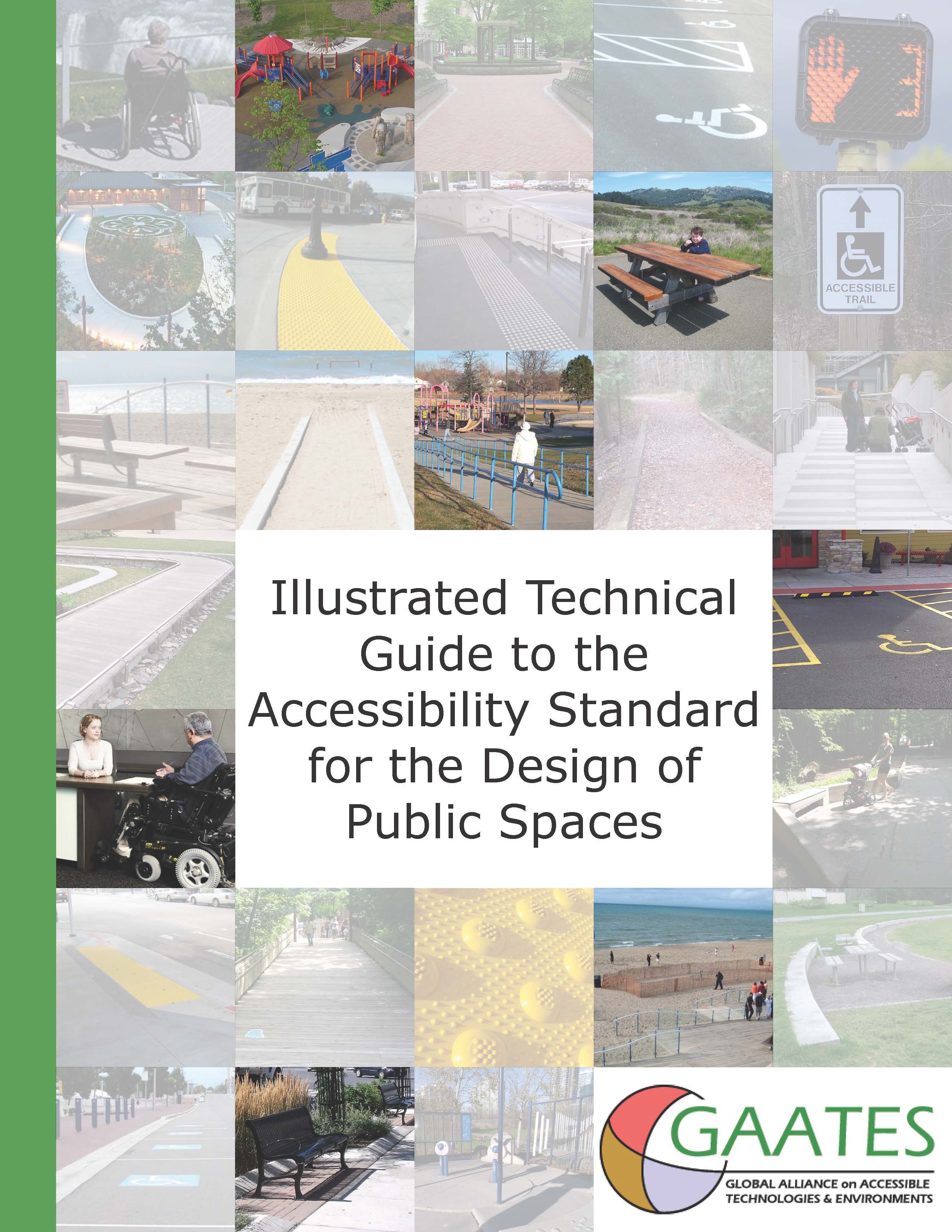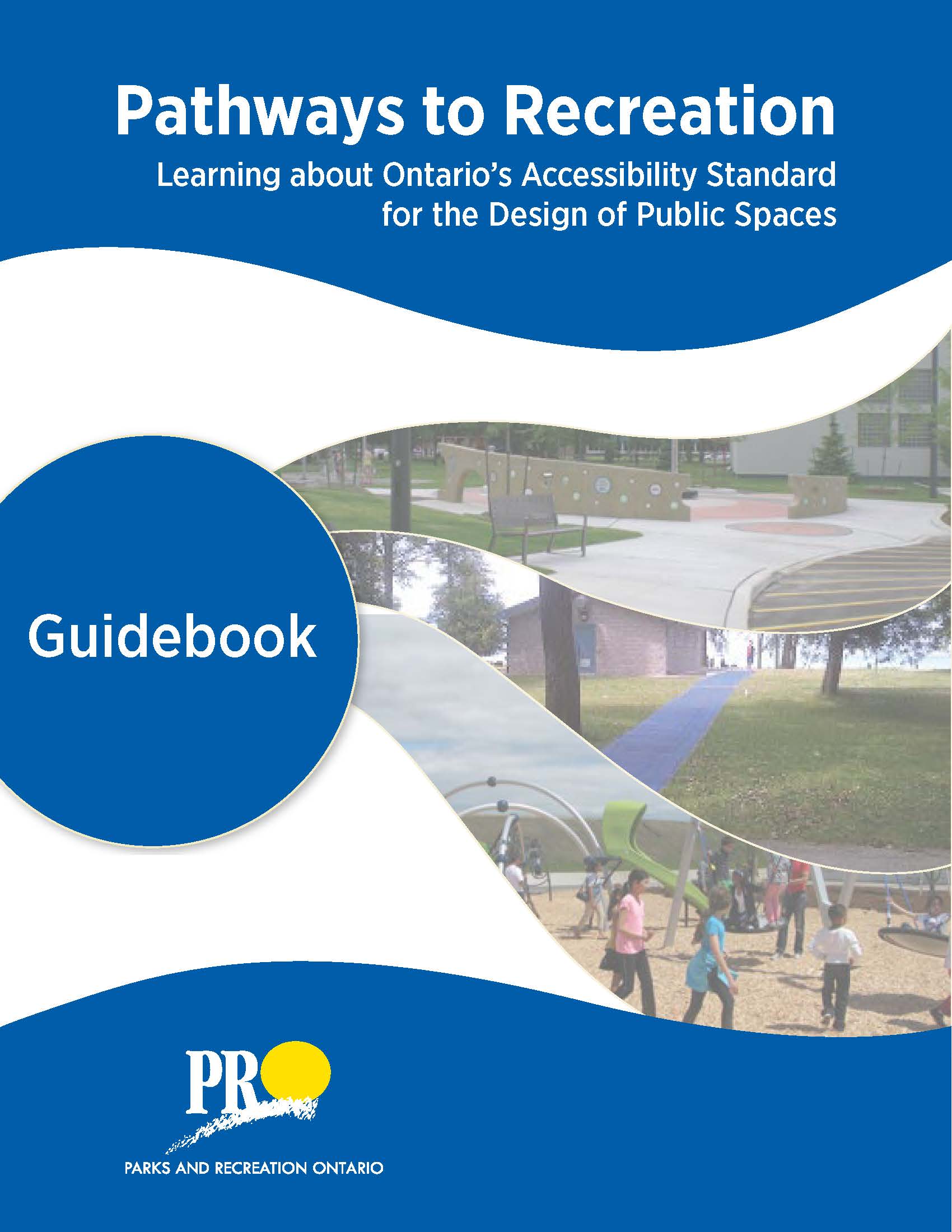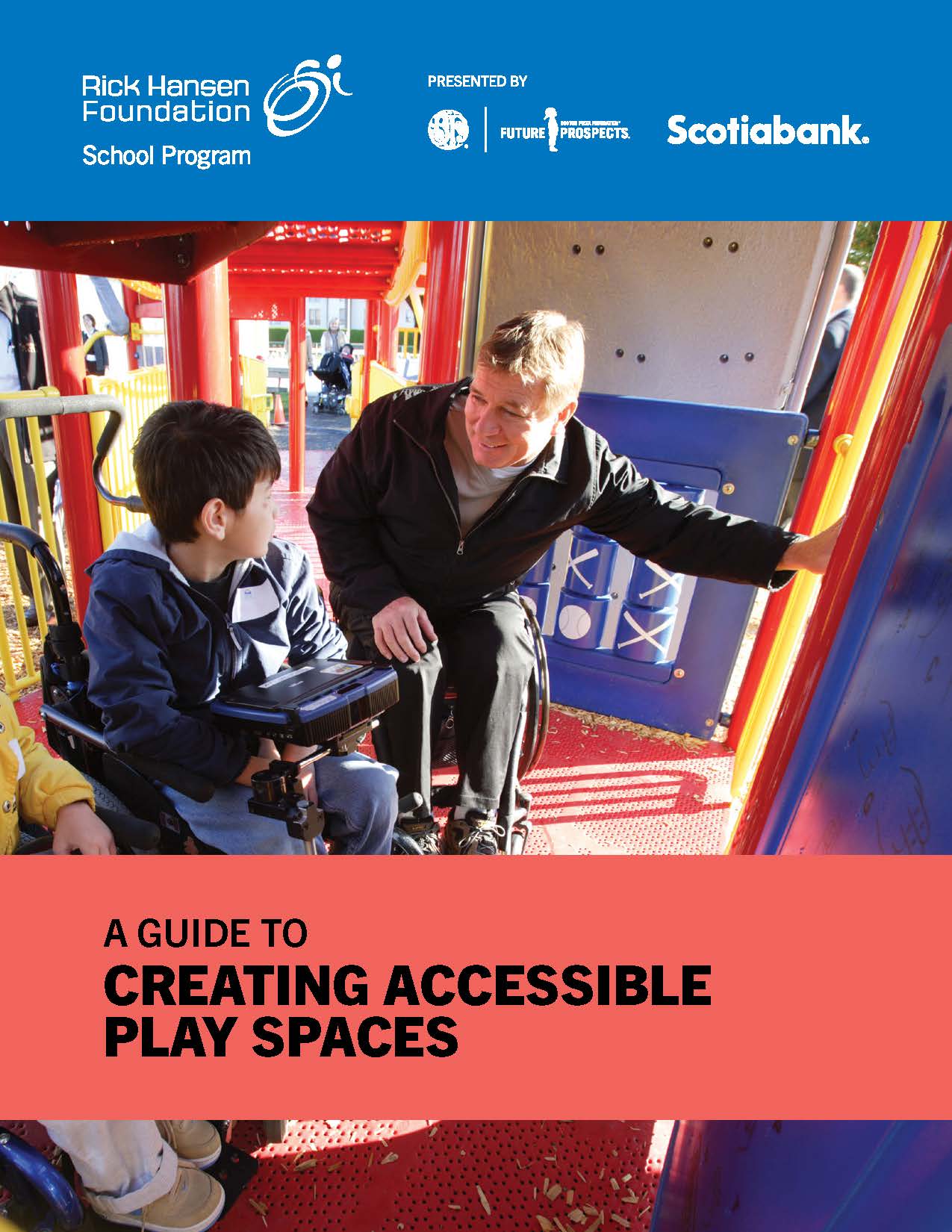Accessibility Guidelines for Sensory Loss
DeafBlind Ontario Services, 2015
The Accessibility Guidelines for Sensory Loss is intended to help design spaces that promote independence, functionality, and safety for individuals who are deafblind or with sensory loss. The key elements of design for individuals who are deafblind are: 1) layout, 2) lighting, 3) colour contrast, 4) texture, and 5) acoustics. Many of these design elements support Universal Design principles and may be considered for use in the wider context of the built environment when designing accessible spaces for individuals of all abilities.

Illustrated Technical Guide to the Accessibility Standard for the Design of Public Spaces
Global Alliance on Accessible Technologies and Environments
The Global Alliance on Accessible Technologies and Environments (GAATES) is a not-for-profit organization that brings together individuals and organizations dedicated to promoting accessibility in electronic communication technologies and the built environment.
This Illustrated Guide will help design professionals develop public spaces that are open and welcoming to everyone, including people with diverse abilities in meeting the requirements of the AODA's Design of Public Spaces standards. This Illustrated Guide provides background information, better practice tips and case studies to make compliance with the accessibility standards more easy to understand.

Pathways to Recreation: Learning About Ontario's Accessibility Standard for the Design of Public Spaces
Parks and Recreation Ontario, 2014
Parks and Recreation Ontario created a guidebook in 2014 addressing the Design of Public Spaces standards under the AODA. The guidebook offers a clear and better understanding of the requirements for making outdoor recreation facilities and amenities accessible, and provides examples of best practices (referred to as "promising practices") that can support successful implementation.
The guidebook is intended to be used in conjunction with the AODA and related legislation as it lists summaries of technical requirements as well as helpful terminology, but does not include the technical specifications for barrier-free design.

Rick Hansen Foundation Accessibility Resources
Rick Hansen Foundation
The Rick Hansen Foundation developed a number of 'Universal Design Recommendations' checklists with best practices for improving the accessibility in the built environment (e.g., accessible entrances and automated doors, accessible elevators, accessible ramps, accessible washrooms, etc.). The checklists are not intended to be definitive rules and are provided with the recognition that meaningful access should consider the unique space.
A more comprehensive Guide to Accessible Play Spaces is also available as a free resource toolkit for designing play spaces that allow children of all abilities to play and enjoy the same activities together. The guide follows Universal Design principles for making playgrounds more accessible and inclusive for all children, including those with disabilities.
